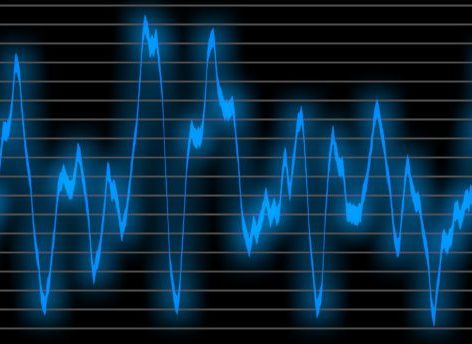DURHAM, England — A blind man rides a bike down the street, avoiding cars and pedestrians using no extra equipment, just a special sensing technique developed with time and practice.
It’s a sort of superpower that has been known about for centuries. In one of the earliest known observations, French philosopher Denis Diderot described a blind acquaintance with the ability in 1749. But it wouldn’t be until nearly 200 years later that a scientist named Donald Griffin would give the technique a name.

“Many blind persons develop in the course of time a considerable ability to avoid obstacles by means of auditory cues received from sounds of their own making, such as footsteps or the tapping of a cane. Their skill can be drastically impaired by earplugs or by distracting noises,” Griffin writes in a 1944 issue of Science magazine. “Since there is no convenient term available to describe this process of locating obstacles by means of echoes, I suggest the word echolocation, not only for the abilities of bats and blind men, but for several other analogous cases which I shall mention below.”
Going on to describe fisherman using whistles to detect cliffs, Griffin says experienced sailors were even said to be able to detect small buoys with the technique. Later, Griffin would be called on to use his echolocation expertise to help with the war effort — specifically for a bizarre proposal to use bats equipped with incendiary devices to destroy enemy cities.
These days, most people continue to associate echolocation with animals like bats and dolphins, but the technique is increasingly used among the blind and is continuing to gain recognition as a useful navigation aid for the visually impaired. And while organizations exist to teach echolocation methods to people around the world, scientists are still just scratching the surface of the science behind human use of the technique.
Opening the door for further research, a new study by British scientists has revealed unprecedented details of the vocal clicks used by many to echolocate. Providing the first description of the “beam pattern” of human echolocators, the study collected a large database of mouth clicks from three blind experts in the technique.
“This allowed us to perform unprecedented analyses,” the researchers write in the paper published recently in PLOS Computational Biology. “Specifically, the current report provides the first ever description of the beam pattern of human expert echolocation transmissions, as well as spectro-temporal descriptions at a level of detail not available before.”
Led by Durham University’s Lore Thaler and Galen Reich of University of Birmingham, the study lays essential groundwork for developing a greater understanding of the ability that has become essential to many blind people’s daily lives.
“Blind people all over the world are restricted, they are not allowed freedom. They are not supported to be free,” says echolocation expert Daniel Kish, in a TED Talk. “Most blind people are not allowed self-directed movement… in order to have freedom of movement, you have to have the brain mechanisms that allow freedom of movement.”
The founder of World Access for The Blind, his organization is aimed at developing those brain mechanisms in children. Through the organization, Kish has helped hundreds of children learn echolocation techniques.
How accurate can people be using the technique? Researchers say that while one might expect bats to far outperform humans, their experiments show the gap is smaller than one might think.
“People have shown to be able to resolve lateral position of objects separated by less than 2°, with best performers having shown thresholds between 1.2° and 1.9°,” they write, referencing a 2012 study by researchers at UC Berkely and Hendrix College. “This compares favorably to the acuity of some bats when measured in a similar way.”
The researchers said this was notable, given that their study showed that human clicks are technically less suited for echolocation than the vocalizations used by bats.
They also suggested that their results would be useful for developing computer simulations of human echolocation for further testing.
The study findings were published recently in the journal PLOS Computational Biology.

Comments
Comments are closed.